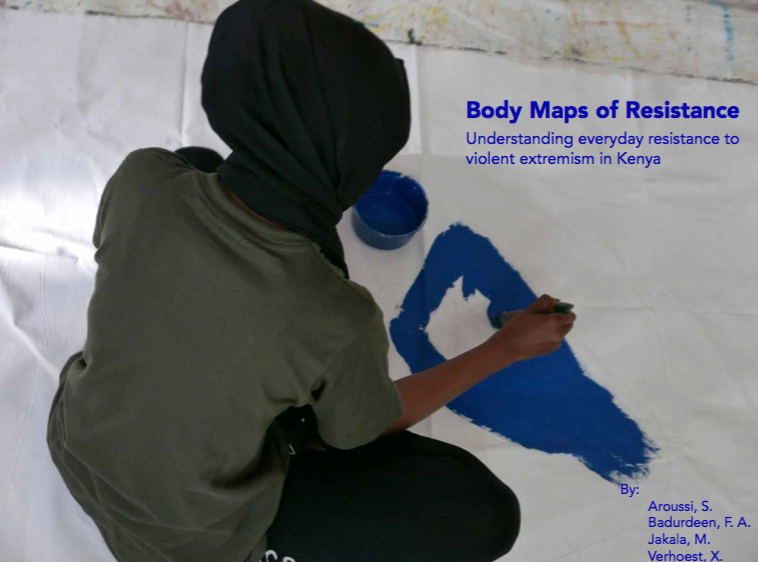This study on Gender and Resistance to Violent Extremism in Kenya explores how men and women at the level of local communities perceive, experience and resist violent extremism in their everyday lives. The research was conducted over the course of 18 months and involved two stages of data collection in Kenya. In the first stage, we conducted interviews and focus group discussions with 67 male and female participants over the age of 18, from diverse ethnic and religious backgrounds in Nairobi, Mombasa and Kwale. The second stage of the study involved conducting two participatory arts-based workshops in Mombasa using body mapping as a co-creative visual method to explore and illustrate how violent extremism is experienced and resisted at local community level. The workshops involved 10 male and 10 female participants from the Muslim communities around the Kenyan coast.
This book: Body Maps of Resistance Understanding everyday resistance to violent extremism in Kenya contains a selection of personal stories created by participants during the workshops that illustrate their everyday struggle with violent extremism and their resistance to it. The book is divided into three sections. In the first section, we discuss the background for the research. The second section describes the body mapping method and process. The third section of this book is dedicated to the artworks created by some of the participants in the workshops and a selection of their personal narratives about violent extremism and resistance.

